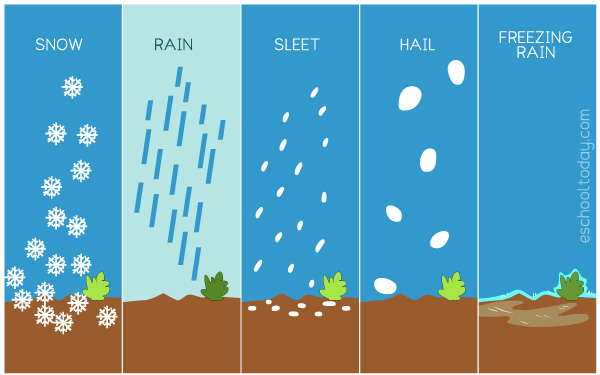- The Water Cycle
Precipitation
It is the various water forms present in the atmosphere, usually falling as snow, rain, sleet, and hail. Sometimes, it can represent as fog and may not fall as rain does, but they are all classified as precipitation.
After condensation, the size of water droplets in the atmosphere gets bigger as more and more water particles bump into each other. Soon, the fall velocity or the force of gravity is more than the wind or air currents holding it. The water has to come down. Precipitation can be in the form of rain, snow, sleet, and hail.
It is important to note that particulate matter (very tiny particles made up of dust, soot, and salt) plays an important role in the formation of water droplets. They serve as a nucleus around which the water will settle. This is why rainwater is not always pure, because depending on the particulate matter in the atmosphere, the water may contain various minerals. Some rainwater, such as acid rain, may be harmful.

Precipitation can come in many forms such as rain, sleet, snow, hail, and freezing rain.
The amounts of water that fall from the sky vary a lot. Some regions are constantly having rains, while others have very little rain all year.
